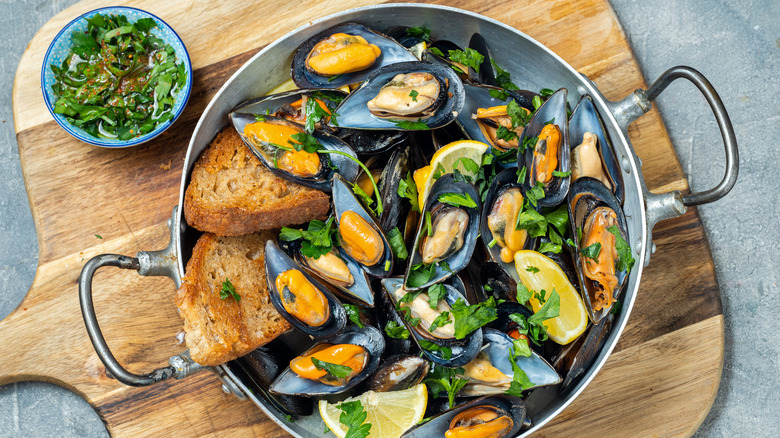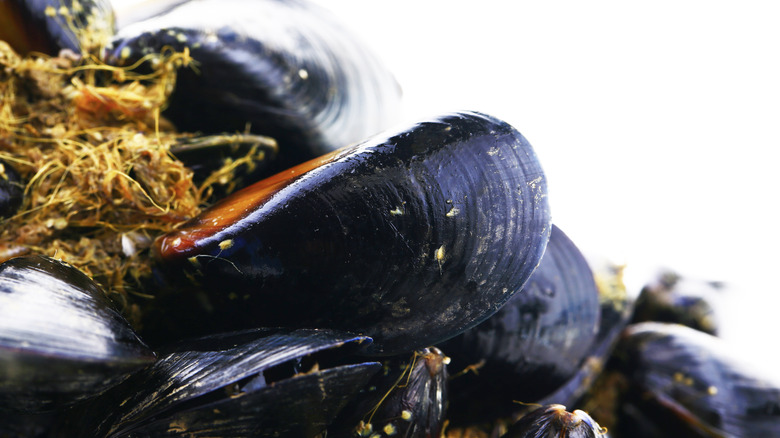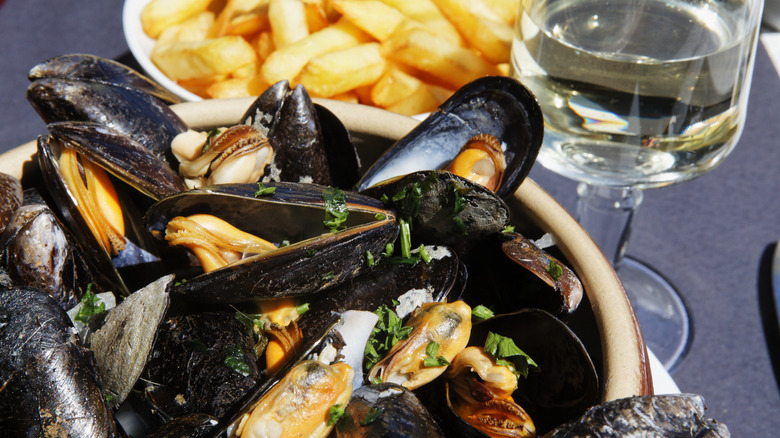Yes, You Should Be Debearding Your Mussels
The fruits of the ocean are varied and bountiful. Oysters, scallops, shrimp, clams; all of these shellfish have an innate sense of luxury when served to us, whether steamed, sauteed and tossed with pasta, or served raw on the half shell. Sometimes we wonder if we should really be eating raw shellfish, but they taste too good to put down.
Among the many delicious seafood offerings available, mussels are my personal favorite for their delicately sweet (bordering on dessert-friendly), oceanic flavor. Their taste paired along with their tender, buttery texture makes mussels completely irresistible.
All the best meals require a bit of effort, and mussels especially need to be properly cleaned before cooking and consuming. Though there's bound to be some dirt and sand on the outside, the most glaring thing on a raw mussel is the hairy patch found at the base of the shell. Though you may want to cut corners and leave it on for the sake of ease, this should surely be taken off before prepping for the best eating experience.
What is a beard on a mussel?
Though they look similar to the beard on a man, a mussel's beard does more than just lend the bivalve a rugged, handsome appearance.
The beard on a mussel is the fibrous filaments that come out of the hinge of a mussel's shell. It's also called a byssal or byssus, stemming from the proper name for byssal threads. Also some countries in the Mediterranean colloquially refer to it as seasilk.
Mussels attach themselves to rocks and other sturdy, submerged structures with the help of their beards. Though they are not in any way poisonous or dangerous to eat, they have an unpleasantly tough, wiry texture that is not particularly appetizing. Since the threads tend to clump together, it is also easy for seaweed, sand, and other inedible ocean debris to get tangled in them; so it is always best to thoroughly clean your mussels before cooking them.
How to debeard your mussels
When preparing mussels, you should always start by rinsing them off in a colander with cool water, and scrub off any dirt on the outer side of the shell. While doing this you also need to make sure that all your mussels are still alive, which is easy to tell as long as the shells are tightly closed together. If you do come across any open shells, give them a slight tap and they should close up, but if they stay open they are dead and need to be discarded.
Now onto the beards, which are pretty easy to remove. Simply get a firm grasp on the beard with your fingers and pull forcefully toward the bottom hinge end and the beard should release. If you have an issue getting hold of the beard it may help to use a paper towel between your fingers to get a better hold. If you have a particularly stubborn beard you can even use pliers to remove them, though in my experience you usually won't need to go that far.
After proper cleaning, your mussels are primed and ready to use. My favorite is steamed in a white wine and garlic sauce with loads of crusty bread to sop up all the briny broth, a meal so addicting I can never get enough. Speaking of addicting, did you hear about Seattle's mussels testing positive for opioids?


